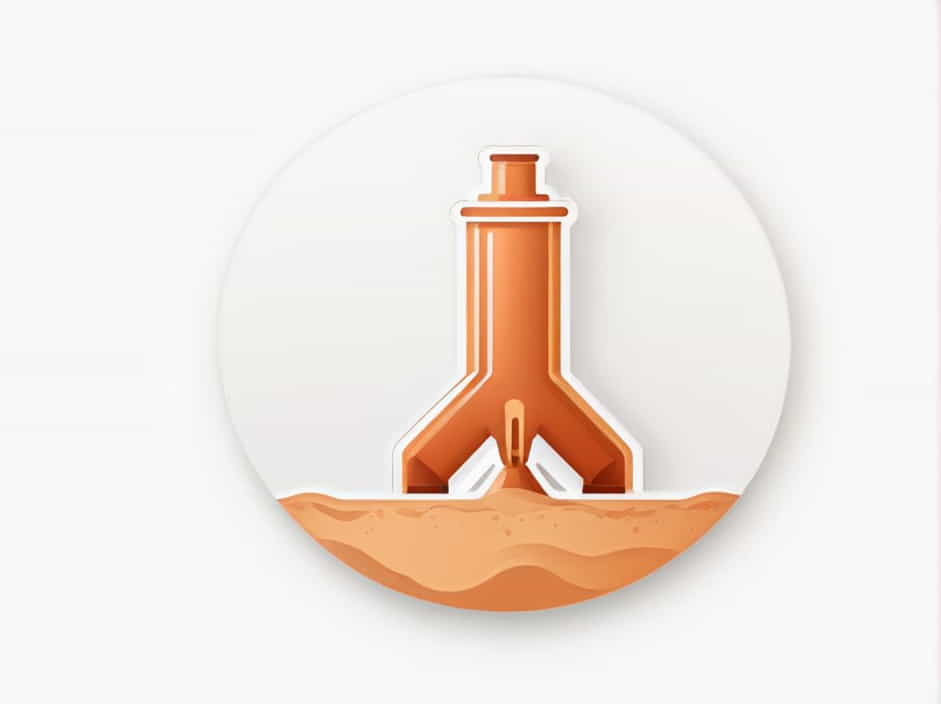Aluminium, one of the most widely used metals in the world, plays a crucial role in various industries such as transportation, construction, and packaging. The extraction of aluminium from its ore, bauxite, is an important industrial process that allows for the production of this versatile metal. we will explore the process of extracting aluminium from bauxite, with a focus on the key methods and steps involved, especially for Class 12 students studying chemistry.
What is Bauxite?
Bauxite is the primary ore of aluminium. It is a naturally occurring mineral formed from the weathering of aluminium-rich rocks. Bauxite is primarily composed of aluminium oxides, including gibbsite (Al(OH)3), boehmite (AlO(OH)), and diaspore (a-AlO(OH)). The composition of bauxite varies depending on the geographical location and the type of weathering processes it has undergone.
Bauxite is typically found in tropical and subtropical regions, particularly in countries like Australia, Brazil, India, and China. The ore is usually obtained through open-pit mining, as bauxite deposits are often located near the earths surface.
The Bayer Process: The Primary Method of Extraction
The extraction of aluminium from bauxite involves two main stages: the Bayer process and the Hall-Héroult process. Let’s first examine the Bayer process, which is the primary method for refining bauxite into alumina (Al2O3), an intermediate product used to produce aluminium.
Step 1: Crushing and Grinding of Bauxite
The first step in the Bayer process is to crush and grind the bauxite into a fine powder. This increases the surface area of the ore, making it easier to extract the aluminium.
Step 2: Separation of Alumina from Impurities
Once the bauxite is crushed, it is mixed with a concentrated solution of sodium hydroxide (NaOH), also known as caustic soda. The sodium hydroxide reacts with the aluminium oxide in the bauxite to form soluble sodium aluminate (NaAlO2), while the impurities in the bauxite, such as iron oxides and silica, remain insoluble and form a residue known as red mud.
The chemical reaction involved in this process is:
This reaction allows for the separation of aluminium oxide (alumina) from the rest of the impurities in bauxite.
Step 3: Precipitation of Alumina
The sodium aluminate solution is then cooled and allowed to stand, where it undergoes a process called precipitation. During this stage, aluminium hydroxide (Al(OH)3) is formed, and it precipitates out of the solution.
The precipitation reaction is as follows:
The aluminium hydroxide precipitate is then separated from the remaining solution by filtration. The precipitate is washed to remove any remaining impurities, and it is then heated in rotary kilns to convert it into alumina.
Step 4: Conversion of Alumina to Aluminium Metal
Once alumina is obtained through the Bayer process, it is then subjected to the Hall-Héroult process for the final extraction of aluminium. This step is crucial because aluminium cannot be extracted from alumina through simple reduction.
The Hall-Héroult Process: Reduction of Alumina
The Hall-Héroult process involves the electrolytic reduction of alumina to produce aluminium metal. This method is widely used in the aluminium industry, as it is an efficient and cost-effective way to produce high-purity aluminium.
Step 1: Electrolysis of Alumina
In the Hall-Héroult process, alumina (Al2O3) is dissolved in molten cryolite (Na3AlF6), which acts as a solvent. The cryolite lowers the melting point of alumina, allowing it to dissolve more easily and conduct electricity efficiently. The electrolyte mixture is heated to a temperature of around 950°C to 1000°C to maintain its molten state.
Step 2: Electrolytic Reduction
An electric current is passed through the molten mixture of alumina and cryolite using a direct current (DC). This leads to the dissociation of alumina into aluminium ions (Al3+) and oxygen ions (O2-). The process takes place in an electrolytic cell, which consists of two electrodes: a carbon anode (positively charged) and a carbon cathode (negatively charged).
At the cathode, aluminium ions (Al3+) gain electrons (reduction) and are deposited as aluminium metal:
At the anode, oxygen ions (O2-) lose electrons (oxidation) and form oxygen gas:
The oxygen gas produced at the anode is released into the atmosphere, while the aluminium metal sinks to the bottom of the electrolytic cell, where it is collected.
Step 3: Collection of Aluminium Metal
The aluminium metal is periodically removed from the electrolytic cell, while the cryolite and the anode are replenished as needed. The Hall-Héroult process continues until all the alumina has been reduced to aluminium.
Energy Consumption and Environmental Impact
The extraction of aluminium from bauxite, especially through the Hall-Héroult process, is an energy-intensive process. The electrolysis of alumina requires a significant amount of electrical energy, making aluminium production one of the most energy-consuming industrial processes. Efforts are being made to develop more energy-efficient methods for aluminium extraction and recycling.
Additionally, both the Bayer and Hall-Héroult processes produce significant amounts of waste, including red mud from the Bayer process and carbon dioxide from the anodes in the Hall-Héroult process. Managing and minimizing the environmental impact of these by-products is a key focus for the aluminium industry.
The extraction of aluminium from bauxite involves two main processes: the Bayer process, which refines bauxite into alumina, and the Hall-Héroult process, which reduces alumina into aluminium metal. The combination of these two processes allows for the large-scale production of aluminium, which is essential for many industries. However, the extraction of aluminium is energy-intensive and produces waste, which necessitates ongoing research into more sustainable and efficient methods of production.
Understanding these processes is crucial for students in Class 12 studying chemistry, as it provides insight into how metals are extracted and refined for use in everyday life.
